ALSO BY DAVID WALDSTREICHER
Runaway America:
Benjamin Franklin, Slavery, and the American Revolution
In the Midst of Perpetual Fetes:
The Making of American Nationalism, 17761820
SLAVERYS
CONSTITUTION
SLAVERYS
CONSTITUTION
From Revolution to Ratification

DAVID WALDSTREICHER
 Hill and Wang
Hill and Wang
A division of Farrar, Straus and Giroux
New York
Hill and Wang
A division of Farrar, Straus and Giroux
18 West 18th Street, New York 10011
Copyright 2009 by David Waldstreicher
All rights reserved
Distributed in Canada by D&M Publishers, Inc.
Printed in the United States of America
Published in 2009 by Hill and Wang
First paperback edition, 2010
The Library of Congress has cataloged the hardcover edition as follows: Waldstreicher, David.
Slaverys constitution : from revolution to ratification / David Waldstreicher. 1st ed.
p. cm.
Includes bibliographical references and index.
ISBN: 978-0-8090-9453-0 (hardcover : alk. paper)
1. SlaveryLaw and legislationUnited StatesHistory. 2. SlaveryLaw and legislationEnglandHistory. 3. SlaveryUnited StatesLegal status of slaves in free states. 4. Constitutional historyUnited States. I. Title.
KF4545.S5 W347 2009
342.7308'7dc22
2008049094
Paperback ISBN: 978-0-8090-1650-1
Designed by Jonathan D. Lippincott
www.fsgbooks.com
1 3 5 7 9 10 8 6 4 2
To
Edward Countryman
Contents
SLAVERYS
CONSTITUTION
Prologue: Meaningful Silences
The Constitution never mentions slavery. The word does not appear. And yet slavery is all over the document. Of its eighty-four clauses, six are directly concerned with slaves and their owners. Five others had implications for slavery that were considered and debated by the delegates to the 1787 Constitutional Convention and the citizens of the states during ratification. This is many more words, with greater implications for slavery, than contained in the Articles of Confederation, the previous, notoriously weak national charter drafted in 1776 and passed eventually by the Continental Congress. All but one of these clauses protects slavery; only one points toward a possible future power by which the institution might be ended. In growing their government, the framers and their constituents created fundamental laws that sustained human bondage.
The Constitution begins by addressing the nature and lawmaking powers of the national government. The U.S. Congress, which would make the laws, is to be composed of a House of Representatives elected by the people every two years and a Senate elected by the legislatures of the states. Before congressional powers are enumerated, or the composition of the Senate even described, however, readers of the new Constitution learned that the number of representatives in the House would be tied exactly to the amount of direct taxes that the national government could requisition from the statesan especially controversial issue of the Confederation era, which stretched from 1776 to 1787. Both taxation and representation would be tied to population, but in a very particular way. Representatives and direct Taxes, begins the third clause of Article I, Section 2, shall be apportioned among the several States which may be included within this Union, according to their respective Numbers, which shall be determined by adding to the whole Number of free Persons, including those bound to Service for a Term of Years, and excluding Indians not taxed, three fifths of all other Persons.
All other persons: Who were they? They were not free men or women. They were not apprentices or indentured servants. They were not Indians who lived among whites and paid taxes, or those who did not. That left slaves. Three-fifths of the number of slaves in any state would count toward a states number of congressmen, and three-fifths of them would count toward how much in taxes a state would have to pay when the Congress passed a direct tax. Africans and their descendants were not being defined as three-fifths of a person, as is sometimes said, for that would have implied that the men among them deserved three-fifths of a vote, when they had none, or had three-fifths of a persons rights before the law, when they had much less than that, usually. Rather, their presence was being acknowledged as a source of power and of wealth, for their owners.
Several other clauses of Article I followed from the logic of what has become known as the three-fifths clause, the origins and evolution of which will be described later in this book. For now, we need only to notice how problems of power and property raised by the definition of the Congress in Article I already had the Constitution favoring people who owned people. Once three-fifths existed as the rule of apportionment, any power given to the House of Representatives would work to the relative benefit of slaveholders and the states that had more slaves. Some considered these the most important powers of all. The first clause of Section 7 specifies that All Bills for raising Revenue shall originate in the House of Representatives, rather than in the Senate. Raising revenue meant, in effect, taxes, and taxes had been the issue that catalyzed the Revolution itself. Putting the popular body in charge of raising money may have been more democratic, as far as citizens of the Republic were concerned. But it also meant that the three-fifths-of-the-slaves bonus would be felt in how money was raised, when it would be raised, and how it would be raised by the federal government. Slave owners might have to pay three-fifths more, but they would have that much more power to determine everyones federal taxes, or whether there would ever be any at all. The three-fifths clause, in other words, gave slaveholders that much more power to regulate, or even eliminate, the three-fifths more taxes they would pay. In the new American order, taxation with representation and slavery were joined at the hip.
Clauses in the eighth section of Article I reinforced the power of the Congress as a whole to levy taxes and import and export duties, and to regulate Commerce between the states and with other nations. Since it was very well-known that most slaves in the United States grew staple crops which were marketed abroad, like tobacco and indigo, this meant that their owners would have the power to make sure that their particular economic interests would not be overridden by senators from states with fewer slaves.
Another clause fed slaveholder power directly by allowing the Congress to mobilize the Militia, the state-based citizen armed forces, to execute the Laws of the Union, suppress Insurrections and repel Invasions. African slaves had not been the only insurrectionists in eighteenth-century America, but their rebellions and the threat of them had been important. From now on any slave rebellions would be a federal matter rather than just a local or regional issue.
The next part of the first article, still laying out congressional powers but now also specifying their limits, began with as explicit an acknowledgment of slavery as the Constitution contains. Most contemporaries would have understood that it referred primarily to slavery. The Migration or Importation of such Persons as any of the States now existing shall think proper to admit, shall not be prohibited by the Congress for twenty years, but a Tax or duty may be imposed on such Importation, not exceeding ten dollars for each Person. The only importation of persons that had been temporarily prohibited or taxed by the North American colonies had been the slave trade. The Congress had been denied a power that the colonies had been denied by the Crownthe power to forbid the slave tradebut then given it back after 1808. The Congress could tax slavery, but not at a higher rate than colonial legislatures had periodically done at times when growing numbers of imported Africans seemed like a threat to whites security.


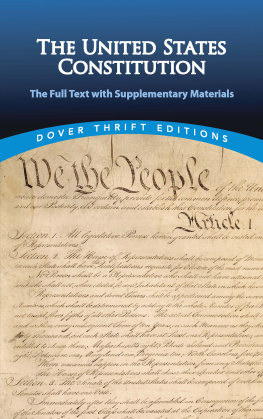
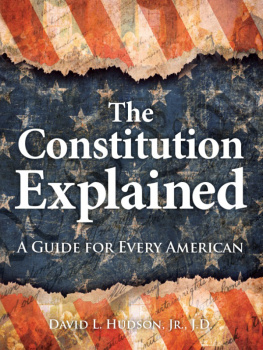
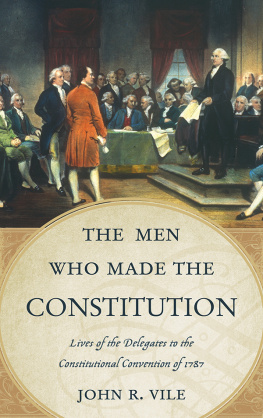
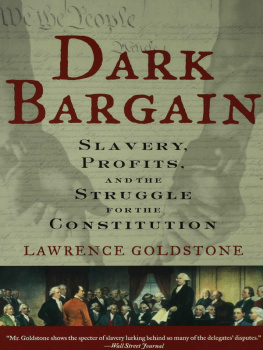
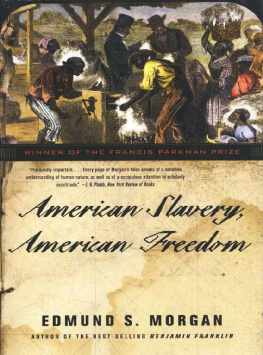
![Jay John - The Federalist : a collection of essays, written in favour of the new Constitution, as agreed upon by the Federal Convention, September 17, 1787. : In two volumes. Vol. I[-II.]](/uploads/posts/book/76130/thumbs/jay-john-the-federalist-a-collection-of-essays.jpg)
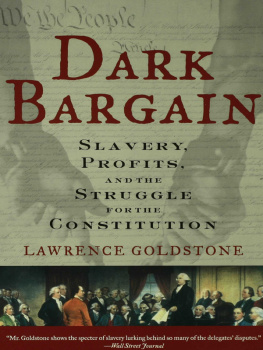
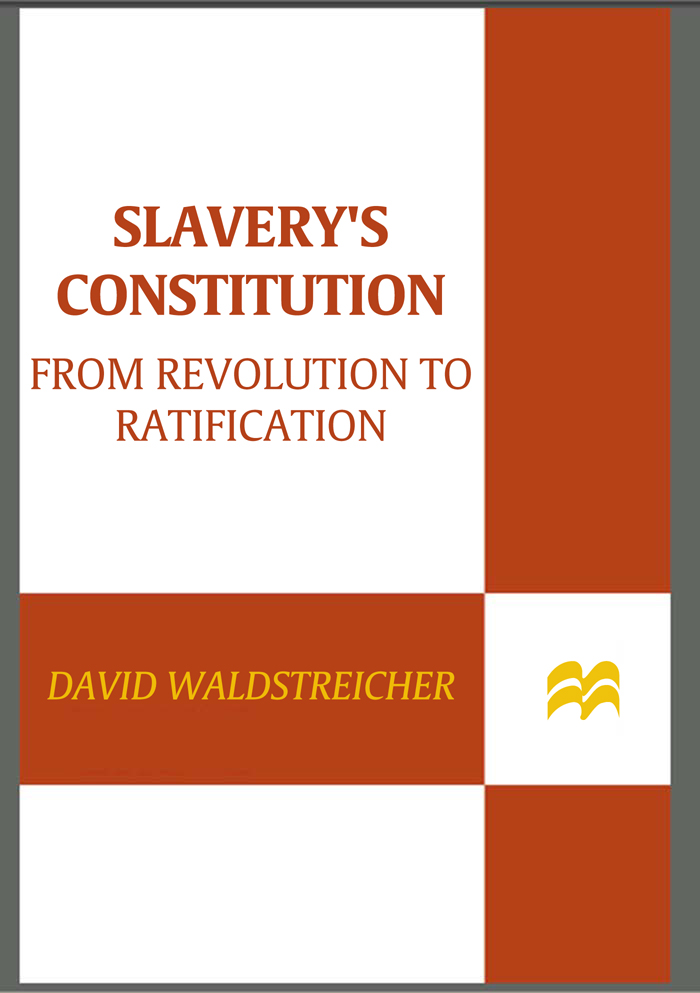

 Hill and Wang
Hill and Wang